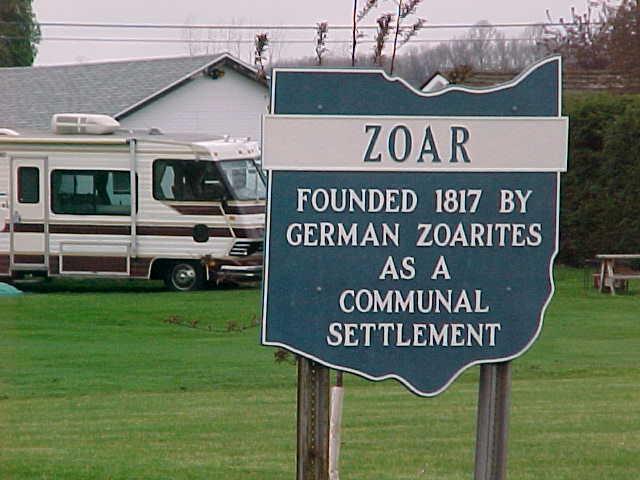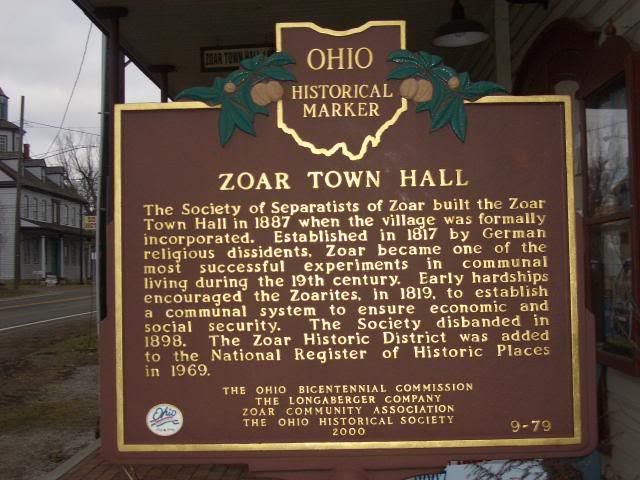Many consider German Village a kind of urban sanctuary -- an historic oasis with a view of downtown, a neighborhood that provides both a step back in time and all the creature comforts of the 21st century.
We have parks that reflect our appreciation for beauty and culture and historic brick streets that we know generations of feet have tread upon before us.
German Village is a sigh of relief, a breath of fresh air and a place wholly different from the rest of downtown.
We pay homage to our forebears with our name -- we are called "German Village" for the Germans who came before us.
And we celebrate the successes those Germans worked so hard for and enjoyed so deservedly in Columbus city government, the brewing and publishing industries, and the field of education among so many others.
German Village, a small pocket of the old "South End," was settled by Germans who wanted to succeed in America and who ultimately became the very image of Americans pulling themselves up by their bootstraps.
Ohio and the Midwest have many communities like German Village (sort of ... there really isn't anywhere like German Village, right?) but there is one community in particular that is clinging to hope for a future as storied as its past.
The Village of Zoar in Tuscarawas County was recently included on the National Trust for Historic Preservation's "America's 11 Most Endangered Historic Places" list.
This is big news, but those living in Zoar are celebrating -- they are hopeful that this listing will bring more attention and new ideas about how to save the community.
The Village of Zoar was established in 1817 by German separatists. It was by all accounts a successful experiment in communal living that lasted until 1898 when the Society for the Separatists of Zoar disbanded.
It was so very different from our German enclave growing south of Columbus, though there are similarities in the determination of the Germans, the high quality of the goods and educational services they produced and which were sought by others, and the sense of community that made the village prosper.
Today the village is protected by a levee that is failing. The U.S. Army Corps of Engineers built the levee in 1936 and this year, the Corps gave the levee its lowest safety rating.
The Historic Village of Zoar has been named to the 2012 list of America’s 11 Most Endangered Historic Places®
The National Trust for Historic Preservation has identified the Village of Zoar, OH as an important historic site that is at risk. The Village sits at the base of a levee constructed by the U.S. Army Corps of Engineers (USACE) nearly 75 years ago to hold back potential floodwaters. The levee is in need of major repairs. By being named to the list of “America’s 11 Most Endangered Historic Places” the historic Village of Zoar moves into a national discussion. The additional attention generated through this designation by the NTHP is expected to encourage more people to learn about Zoar and to become supporters of saving the village.
The historic village on the Tuscarawas River is listed on the National Register of Historic Places. It tells a unique story of a group of German immigrants escaping religious persecution to establish a commune in 1817. Descendents of original founders continue to live in some of the historic homes. It is an easy stroll through town to visit shops, the beautiful garden in the center of town, and to see original homes, the school, the hotel, and more.
The Federal government is required to consider all options to fix the problem and the options are whittled down to: repairing the levee to the tune of $100 million, demolishing the village and letting the area flood, or relocating the village to higher ground.
Can you imagine those options being asked of German Villagers today?
German Village has a long history of working with the government, though thankfully not to this extent.
In many ways, the government gets credit for our very existence. If the Federal Highway Administration and ODOT hadn't decided to construct Interstate 70 through Columbus, severing our seamless connection to downtown, local residents might not have noticed this piece of the South End was worth saving.
Those locals might never have felt a need for a German Village Society. They might never have worked so hard to have German Village become the first historic district in Columbus, and there might not have been an architectural review commission that subsequently helped property values skyrocket and preserv ed historic structures, pieces, and parts.
Yes it breaks my heart to think of the blocks of brick homes, businesses and churches that were demolished to make way for I-70 -- we lost the northern third of what was then considered the South End.
But if losing those blocks helped create and save the German Village we are so fortunate to enjoy and learn from today, then it must have been worth it.
The residents of Zoar have an uphill battle ahead of them, but I think they are looking at this challenge in the right way.
They aren't ashamed of their inclusion on this list -- they are relishing it for the good they hope it will bring.
We thought we had an uphill battle when I-70/71 was to be reconstructed, and while we were given the gift of time, that is a challenge the future Villagers will surely face.
Thankfully we have 50-plus years of civic-mindedness and successes to keep our momentum going and thinking caps firmly in place.
Those who love living in old houses, who love living downtown, who love living somewhere unique, always seem to have to jump a few extra hurdles, but I suppose that's what makes the lives we choose so worthwhile.
If you're looking for a day trip, go visit Zoar. The name means "sanctuary" and for 200 years it has given that to its residents and many a visitor.
Support their local businesses as you do ours and let them count you as one of their many visitors for the year.
They need our support and as fellow preservationists, it's our job to give it to them.
Besides, you never know when German Village will need support from other preservation-minded citizens.
Let's just hope it isn't anytime soon. To learn more, please visit http://www.savingplaces.org/treasures/village-zoar.
German Village Society Historic Preservation Officer Jody Graichen submitted the Village Notebook column to the ThisWeek German Village Gazette.




No comments:
Post a Comment